

— Products —
 Consumer hotline +8618073152920
Consumer hotline +8618073152920 WhatsApp:+8615367865107
Address:Room 102, District D, Houhu Industrial Park, Yuelu District, Changsha City, Hunan Province, China
Weather Stations
NBL-W-VS Visibility instruments (visibility sensors) provide measurements related to meteorological visibility. The sensors are designed based on the principle of aerosol forward scattering, and are a new generation of meteorological visibility monitoring equipment developed following the transmissive visibility instruments. The sensor can be widely used in weather stations, remote automatic weather stations and transport sectors such as airports, motorways, airways and large···
Tel/WhatsApp:+8615367865107
Email:Arvin@niubol.com +Nearly 100 partner companies in more than 68 countries. We are committed to providing high-quality, practical products to meet your needs and help you solve problems. Our products comply with international standards and are certified with ISO, CE and RoHS.Product Details
Visibility instruments (visibility sensors) provide measurements related to meteorological visibility. The sensors are designed based on the principle of aerosol forward scattering, and are a new generation of meteorological visibility monitoring equipment developed following the transmissive visibility instruments. The sensor can be widely used in weather stations, remote automatic weather stations and transport sectors such as airports, motorways, airways and large ships.
The visibility meter (visibility sensor) consists of light transmitter, light receiver and microprocessor controller and other major components. The transmitter emits infrared pulse light, the receiver simultaneously detects the intensity of the pulse light scattered by the forward scattering of aerosol particles in the atmosphere, and all the measurement information is collected by the microprocessor controller and converted into Meteorological Optical Range (MOR) by special mathematical modelling algorithm.
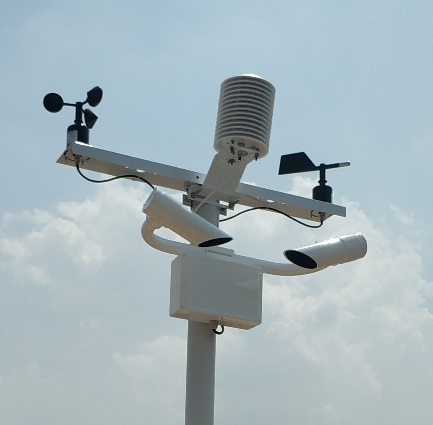
Front View
The visibility instrument (visibility sensor) requires a DC12V power supply and a three-wire RS485 communication cable. The instrument sends the meteorological visibility values and status information to the host computer in the monitoring centre via a communication interface.
The visibility instrument provides several sets of built-in commands for configuring system parameters and controlling many functions of the system. During assembly and maintenance, a display terminal is required to check the system parameters and may be used to change the parameter values.
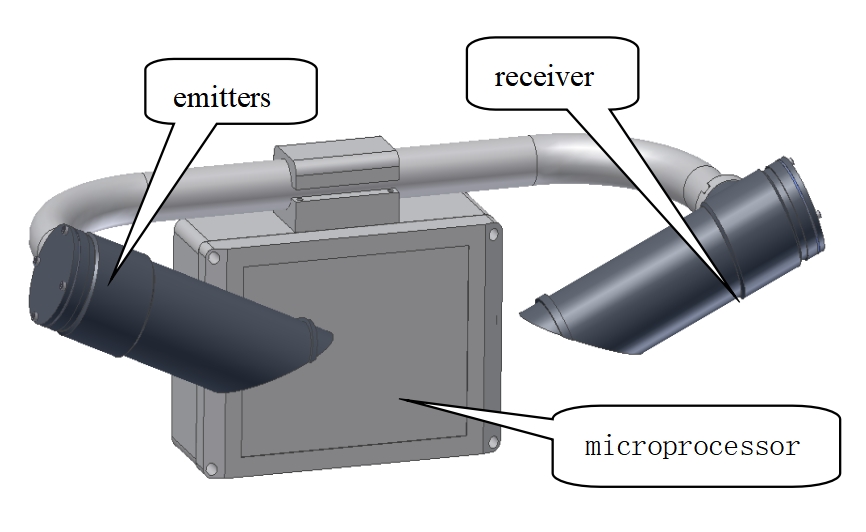
The visibility meter has all the performance characteristics of a forward scattering instrument, which is achieved by measuring the forward scattered light emitted by suspended particles in a sampling zone of less than 90 degrees; the sampling zone of the visibility meter is determined by the intersection of the transmitter's transmitting optical path and the receiver's receiving optical path. Obviously, it differs from the total extinction coefficient measured by a transmissometer in that a forward scatterometer measures only the scattering coefficient at a certain angle, i.e. a narrower scattering angle near the central forward scattering angle.
It is generally accepted that the calculation of daytime and nighttime visibility requires the measurement of the total extinction coefficient, not the angular scattering coefficient, and it is therefore necessary to show that the angular scattering coefficient is, under certain conditions, in definite proportion to the total atmospheric extinction coefficient, which consists of the sum of the scattered and absorbed rays over the whole range.
At visibility measurements of less than 100 km, suspended particles such as fog, smoke, haze, dust or sand, and various types of precipitation determine the atmospheric extinction of visible and near-visible light, and it is only at distances of more than 100 km that the scattering of molecular matter comes into play; the absorption of suspended particles and precipitation is negligible compared to their scattering. For these reasons, the total scattering coefficient can be equal to the total extinction coefficient at visibility less than 100 km.
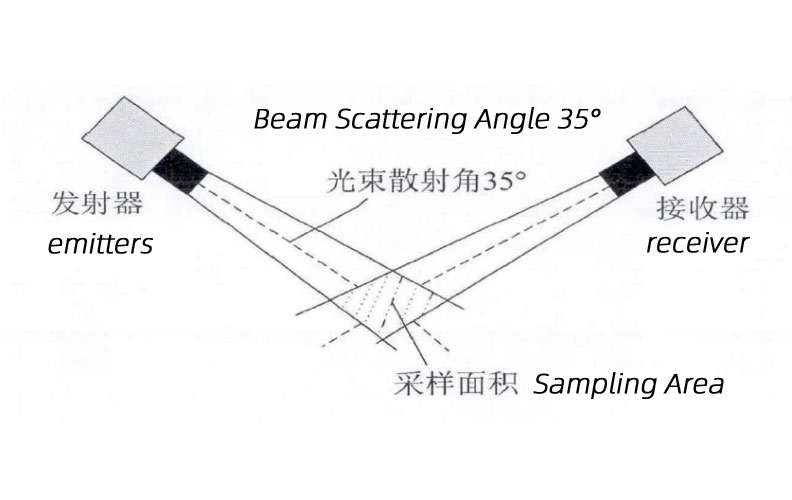
| Parameter | Specification |
|---|---|
| Supply voltage | DC 12V |
| Signal output | RS485 |
| Communication protocol | MODBUS protocol |
| Baud rate | 9600 |
| Technical principle | light scattering |
| Average power consumption | 0.8W |
| Scattering angle coverage | 39°–51° front scattering |
| Peak wavelength | 875 nm |
| Bandwidth | 100 nm |
| Measuring range | 5–10 KM |
| Measurement accuracy | ≤2 km, 2%; 2 km–10 km, ±10% |
| Working temperature | -40–80 ℃ |
| Working humidity | 0–95% RH |
| Standard cable length | 10 metres |
| Size | 610 mm x 230 mm x 300 mm |
| Material | anodized hard aluminium, with paint protection on the outer surface |
| Protection grade | IP65 |
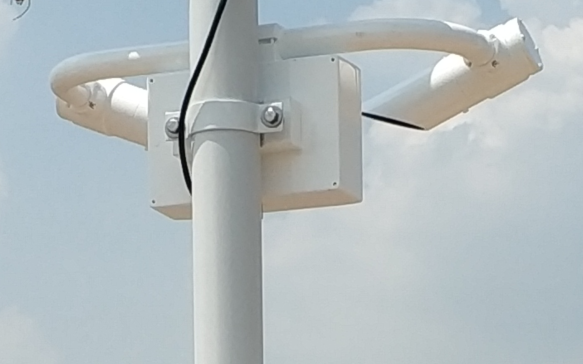
Rear view
1. Structural features: visibility meter adopts integrated structural design, compact and small, sensor size and weight is very small, packaging, storage and transportation, easy to install, can also be used as a portable instrument; unique dual-scattering receiver structure design, the sun and other stray light interference is reduced to a minimum.
2. The emitter and receiver window lenses have undergone special anti-dust and anti-mould coating treatment, which greatly reduces the thickness and speed of dust accumulation in the natural environment, and also reduces the chances of contamination by salt spray and oil.
3. The instrument structure material is high quality rigid aluminium and 316 stainless steel, the surface is anodized and passivated, and multi-channel paint protection; all screws are selected corrosion-resistant stainless steel screws; the inside of the casing is sealed to achieve IP65 protection level, with coastal climate adaptability.
4. The power consumption of the instrument is extremely low, less than 1W, so it can be adapted to the power supply working mode of battery or solar panel power supply. DC 12VDC power supply, convenient for system integration.
5. The instrument collector is designed to emphasise long-term operational stability, with a built-in watchdog circuit, which has been tested over a long period of time, making the instrument work stably and reliably.
6. Real-time data display: the sensor can output a series of digital information every 60 seconds, and the information can be output by passive recruiting.
7. The DC power supply circuit of the instrument has the double design of anti-reverse connection and self-recovery insurance, even if the user misoperation, it will not cause the instrument circuit board to burn, no need to replace the fuse, and it can be restored to normal after re-correct operation.
8. The communication interface chip of the instrument has 15KV anti-static protection, which can maximally protect the circuit from the harm of human body static electricity during the user wiring operation.
9. Instrument has lightning protection measures, its communication interface and power interface have lightning protection design, which can minimise lightning damage.
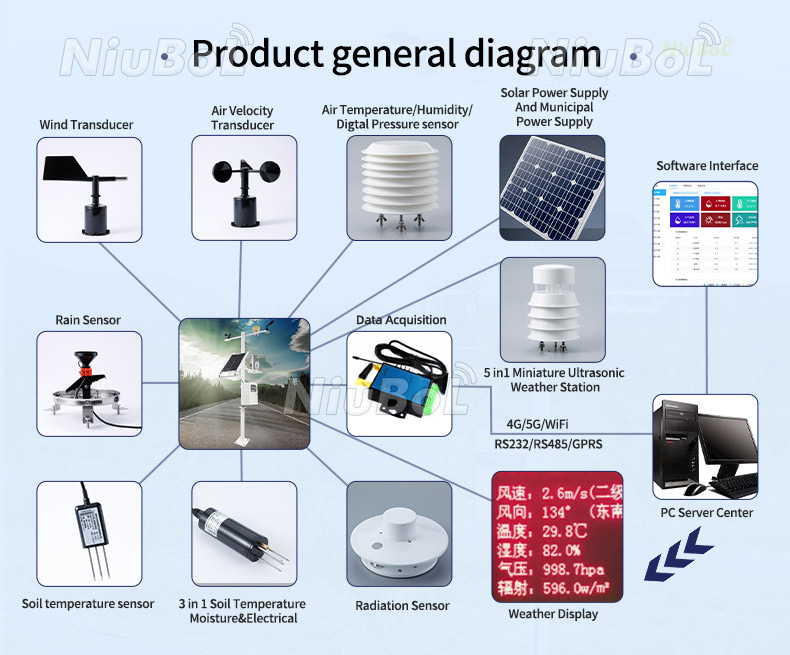
Visibility sensors Mounting Procedure
Installation of the visibility meter requires the user to provide an existing mounting post, and the instrument is supplied with mounting clamps, which have a very large mounting allowance.
Hold the visibility meter up, with the V-clamp on the back of the control box close to the column, and use the other V-clamp and 2 screws to mount the visibility meter to the column or cross arm as a whole. The mounted visibility meter is horizontal, with the open slopes of the transmitter and scatter receiver facing down.
Sensors & Weather Stations Catalog
Agriculture Sensors and Weather Stations Catalog-NiuBoL.pdf
Weather Stations Catalog-NiuBoL.pdf
Related recommendations
 Wind Speed sensor Output Modbus/RS485/Analog/0-5V/4-20mA
Wind Speed sensor Output Modbus/RS485/Analog/0-5V/4-20mA Tipping bucket rain gauge for weather monitoring auto rainfall sensor RS485/Outdoor/stainless steel
Tipping bucket rain gauge for weather monitoring auto rainfall sensor RS485/Outdoor/stainless steel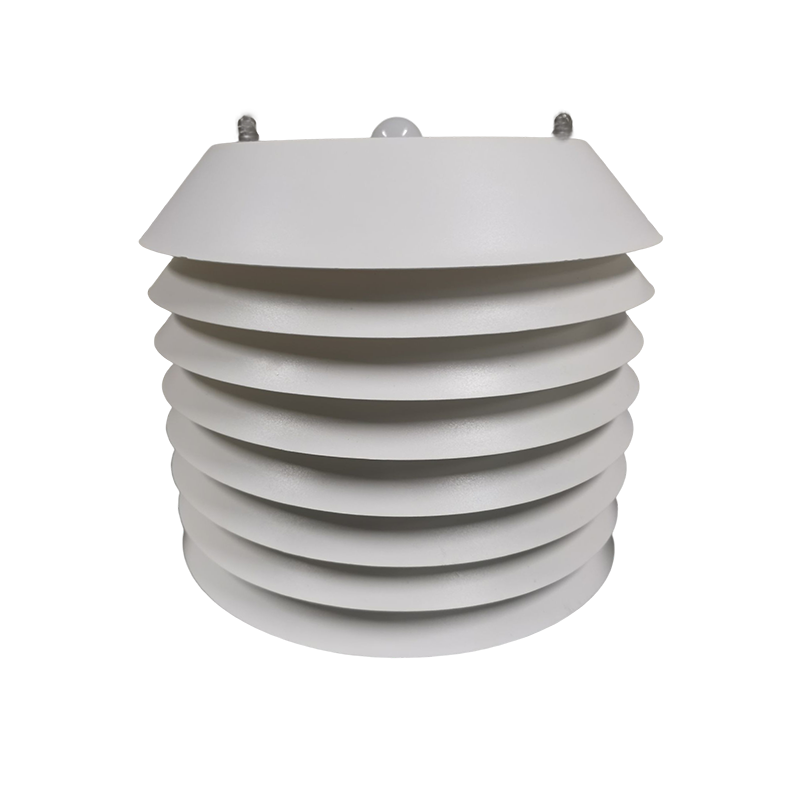 5-in-1 Temperature, Humidity, Air Pressure, Illumination, CO2 Sensor
5-in-1 Temperature, Humidity, Air Pressure, Illumination, CO2 Sensor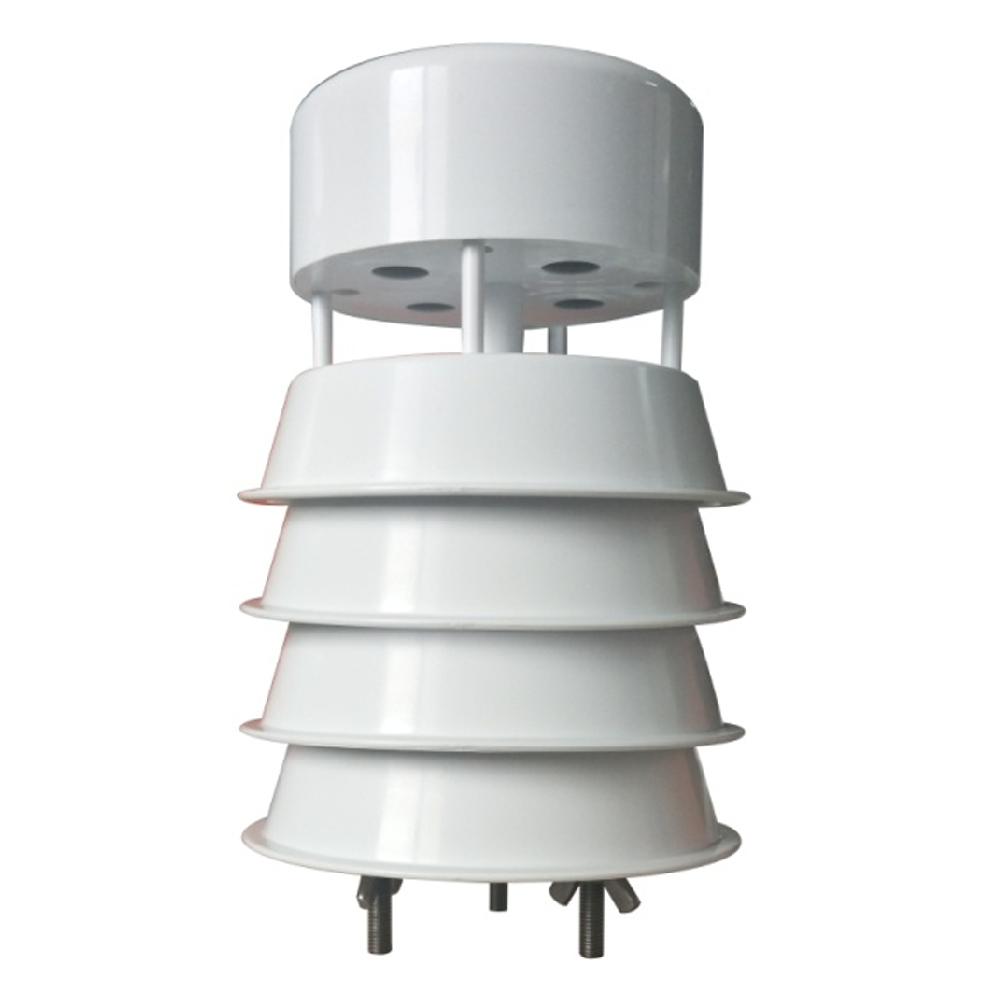 5 in1 Ultrasonic weather stations Atmospheric Pressure Temperature Humidity Wind Speed Direction sensor
5 in1 Ultrasonic weather stations Atmospheric Pressure Temperature Humidity Wind Speed Direction sensor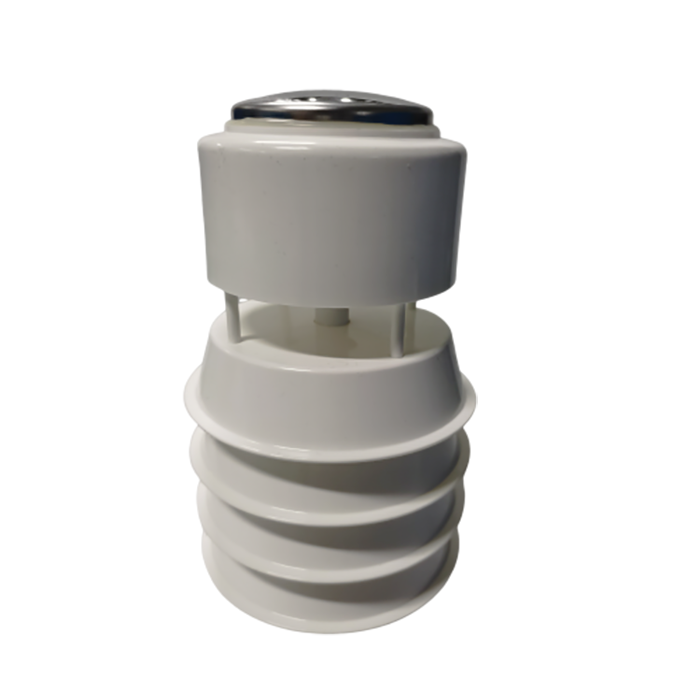 6 in1 Ultrasonic Weather Station Sensor for industrial & agricultural & environmental monitoring
6 in1 Ultrasonic Weather Station Sensor for industrial & agricultural & environmental monitoring 7 in 1 Ultrasonic Weather Station Sensor for Wind speed,Wind direction,Temperature, humidity, pressure,Illumin···
7 in 1 Ultrasonic Weather Station Sensor for Wind speed,Wind direction,Temperature, humidity, pressure,Illumin···
Screenshot, WhatsApp to identify the QR code
WhatsApp number:+8615367865107
(Click on WhatsApp to copy and add friends)
